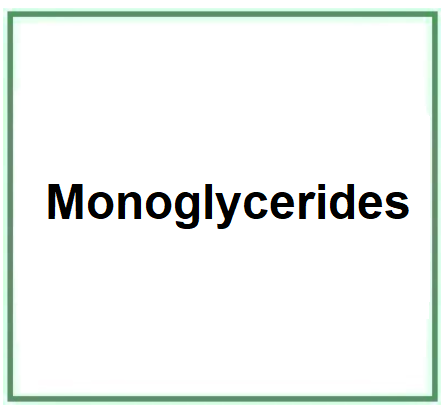Monoglycerides are esters formed from glycerol and a fatty acid. They are commonly used molecules as emulsifiers in the food industry.
The name describes the structure of the molecule.
- Mono indicates that a single water molecule has been removed.
- Glycerides refers to an ester derived from glycerol and fatty acids.
Description of raw materials used in production.
- Raw materials for producing monoglycerides include glycerol and fatty acids, which can be obtained from both animal and plant sources. Glycerol might come from vegetable oils, while fatty acids might come from either plant or animal oils or fats.
Step-by-step summary of industrial chemical synthesis process.
- Production of Glycerol and Fatty Acids. Glycerol and fatty acids are obtained through the hydrolysis processes of oils and fats.
- Esterification. The fatty acids and glycerol are then reacted together through an esterification process to produce monoglycerides.
- Purification. Monoglycerides are purified to remove any impurities.
Form and color. Monoglycerides typically appear as waxy solids, colorless or slightly yellowish, depending on the degree of purification and the raw materials used.

Commercial applications.
Monoglycerides are widely used in the food industry as emulsifying agents. They are employed in a variety of products, including baked goods, snacks, sweets, margarine, and other food items to enhance the stability and texture of products.
Emulsifiers. Monoglycerides are used to stabilize emulsions in foods, preventing the separation of oils and liquids.
Anti-Staling Agents. Used to prevent the formation of ice crystals in frozen products like ice cream.
Dough Strengtheners. Enhance the texture and quality of doughs in baked goods.
Release Agents. Help to prevent food from sticking to surfaces, useful in baking and candy production.
Foam Stabilizers. Used to stabilize foams in food mousse and whipped cream.
Dough Conditioners. Used to enhance the manageability and workability of doughs.
![]() Monoglycerides
Monoglycerides 


